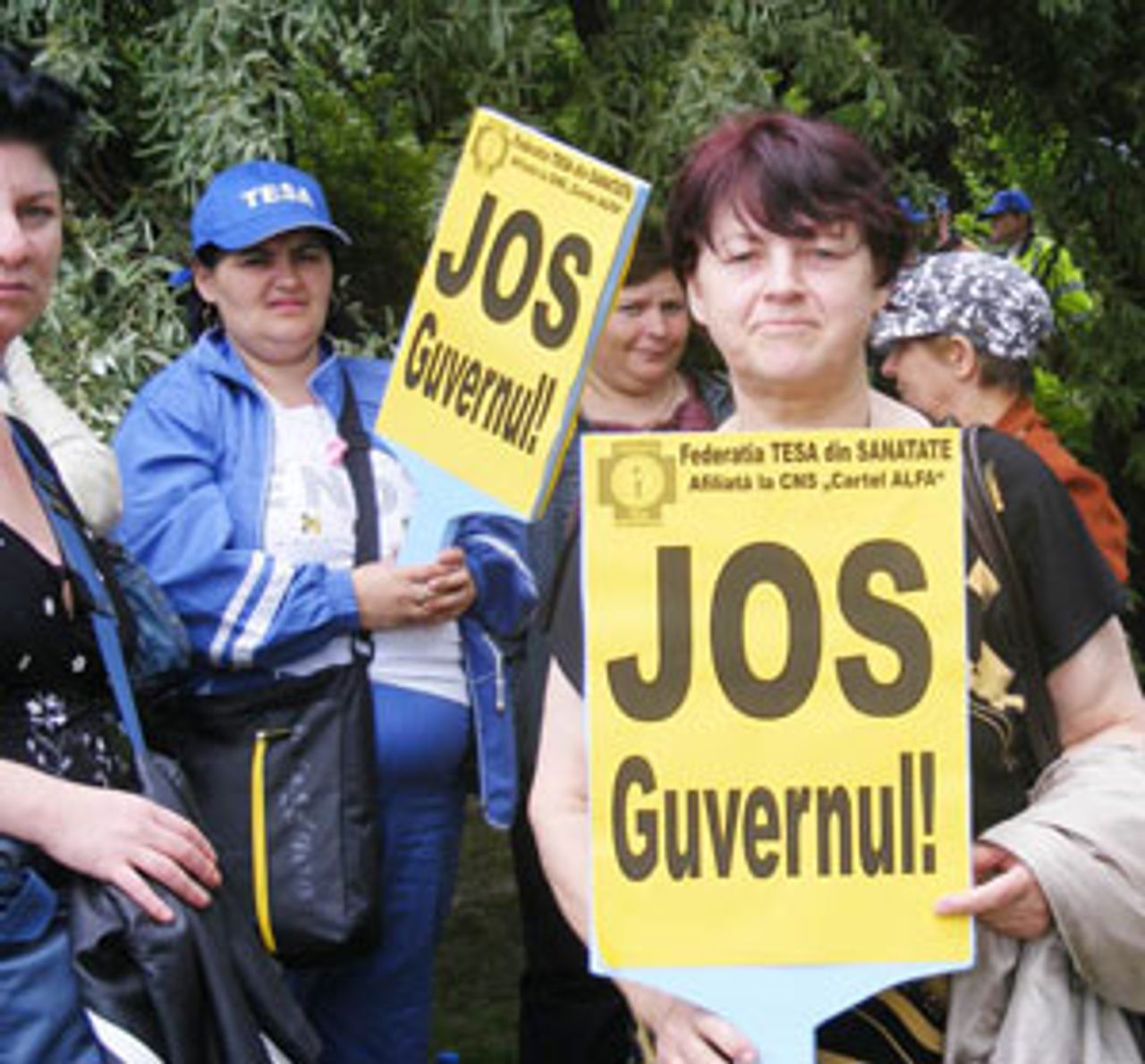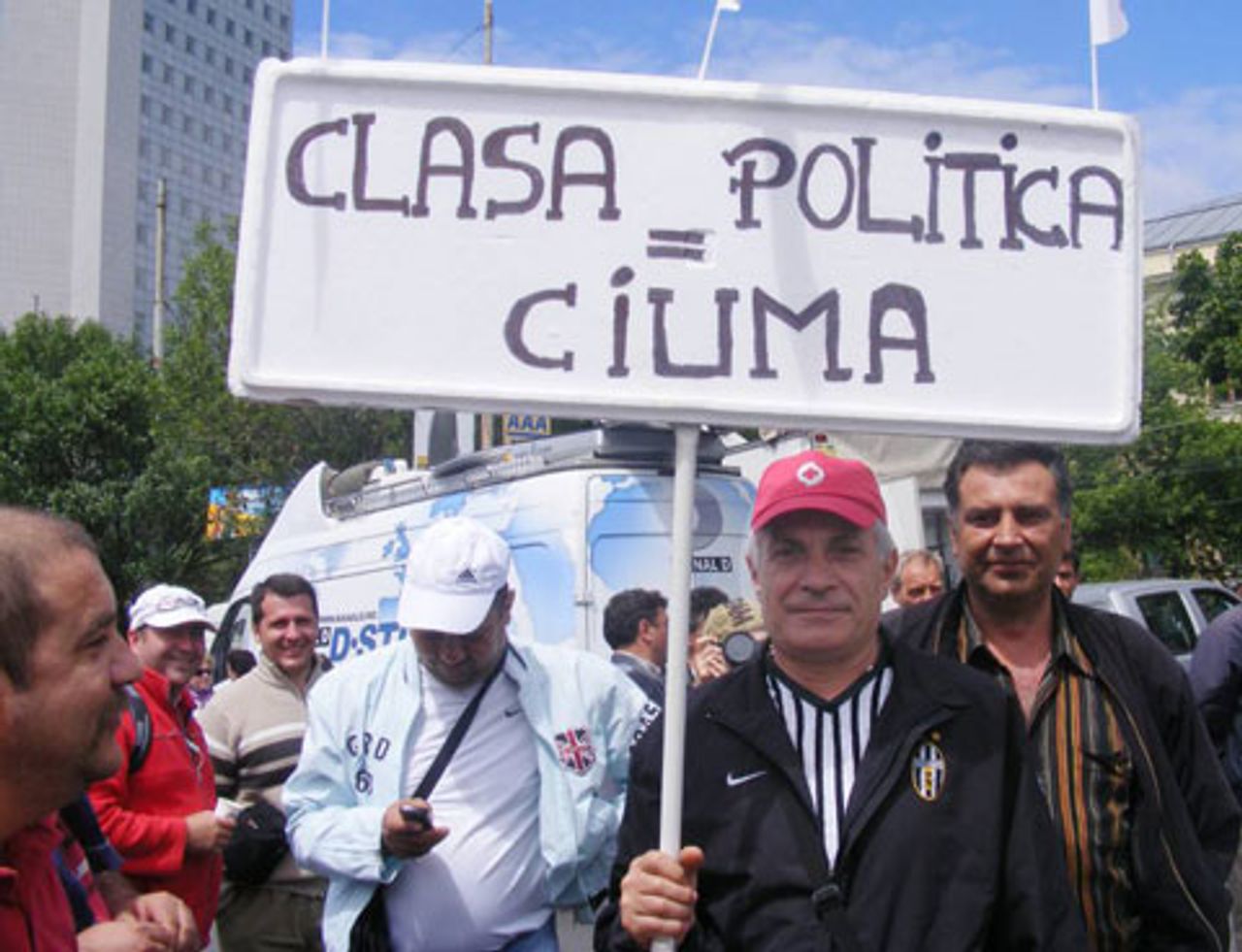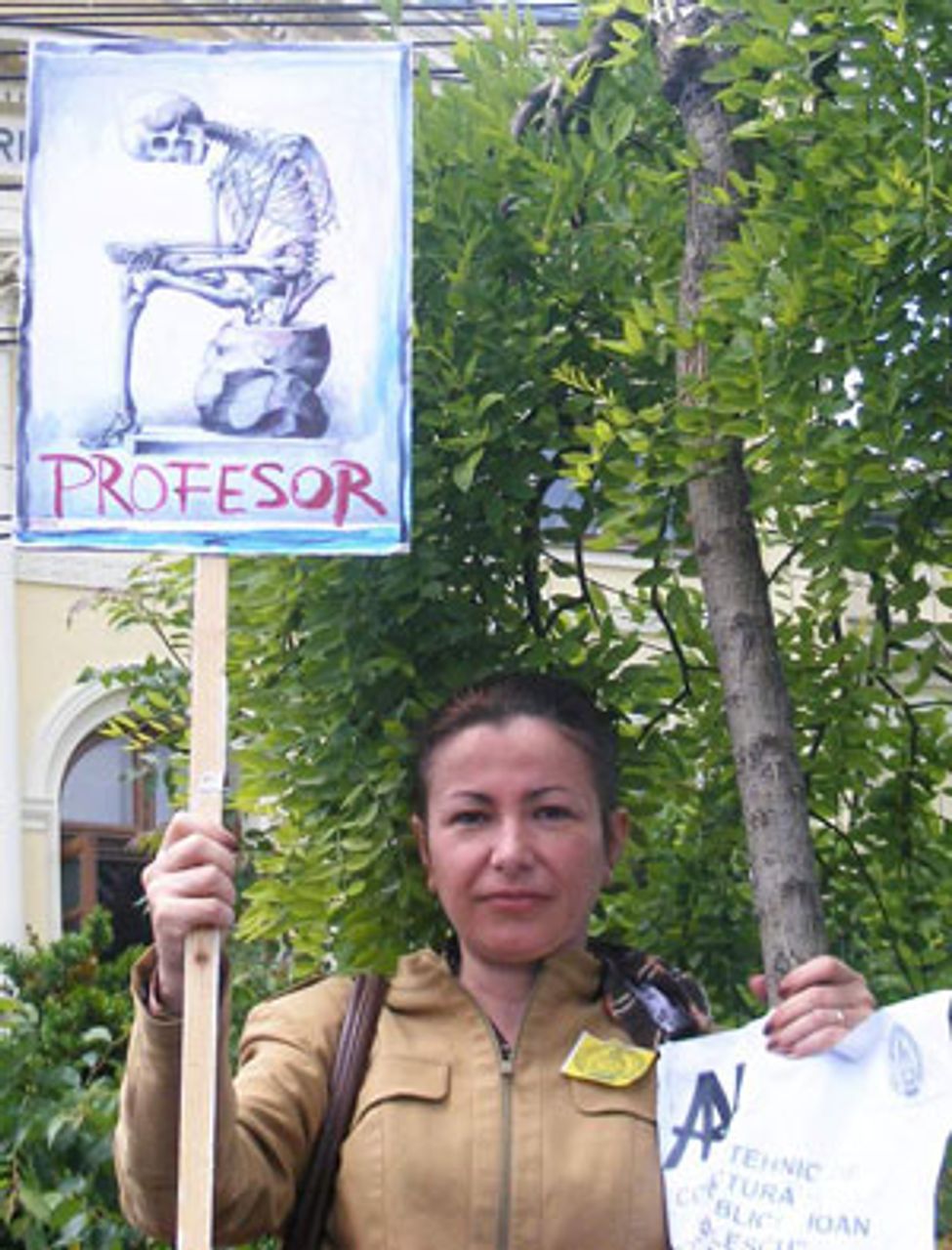On May 19, some 40,000 workers took to the street in Victory Square, Bucharest, in the largest demonstration in Romania since the downfall of the Stalinist regime in 1989.
 “Down with the government”
“Down with the government”Public sector employees, including teachers and health care workers, as well as pensioners and young mothers, protested against the austerity programme agreed to by the government with the International Monetary Fund (IMF) and the European Union. The package includes a 25 percent cut to salaries, 15 percent cut to pensions, the reduction of maternal benefits and the gutting of welfare programmes.
Workers came from all over the country to show their opposition to the austerity measures. Most had traveled long distances by night, and many had had their buses stopped and checked by the authorities upon entering the capital.
“We have taken a lot”, said one protester from outside Bucharest, but “now we came here because this is too much. We can’t live anymore”.
The general atmosphere, behind the choreography and the songs coming from the platform, was one of anger and tension. The workers called for the resignation of the national government and appealed for a general strike. Prime Minister Emil Boc and President Traian Basescu were targeted as representatives of a corrupt ruling elite that governs the country. Placards read “We die, you die with us” and “Die well”, referring to the president’s famous campaign slogan “Live well”.
 “Political establishment = plague”
“Political establishment = plague”Union leaders engaged in rhetoric, but their strained tone and appeals to the government were blatantly at odds with the mood of the crowd. Their weak calls for the Boc regime to clamp down on tax evaders and corruption in the public sector will find a more receptive audience among nervous television anchors than workers who find their livelihoods threatened by the economic crisis.
The union leadership looks to the opposition Social Democratic (PSD) and National Liberal (PNL) parties for a solution and has called for further protest to correspond with a no-confidence motion to be introduced in parliament against Boc’s Democratic Liberal (PDL) government. The opposition parties, however, only propose further cuts or tax increases, and both have amply shown in the past that they are perfectly capable of carrying out such anti-working class measures.
As the May 19 rally shows, the safety fuses are burning up fast for Romania’s ruling elite, which finds itself unable to cope with the current debt crisis, except through a frontal attack on the working population. Confronted with a wave of spontaneous strikes in the months preceding the recent announcement of cuts, the unions’ capacity to control and dampen popular anger is in serious question.
 A teacher
A teacherEconomy Minister Sebastian Vladescu recently warned that “The risk that Romania is facing today of moving into a violent zone is rather high. The analyses that are being made show that this is possible”. Vladescu said that he believed that “one of our greatest obligations at this moment is to be sufficiently inventive to create the resources necessary to allow us to maintain the peace”.
On May 31, a general strike is anticipated in education and a solidarity strike by health care workers. The union leaders are once again trying to prove how “inventive” they are, calling solidarity strikes in public transport for June 1, rather than May 31, while leaders from the railway and postal unions have declared that they would not call strikes until they “see the cuts” themselves.
Workers must draw the political lessons of the struggle against the austerity measures, break with the union bureaucracy and organise independently, coordinating with their class brothers in the advanced capitalist countries.
